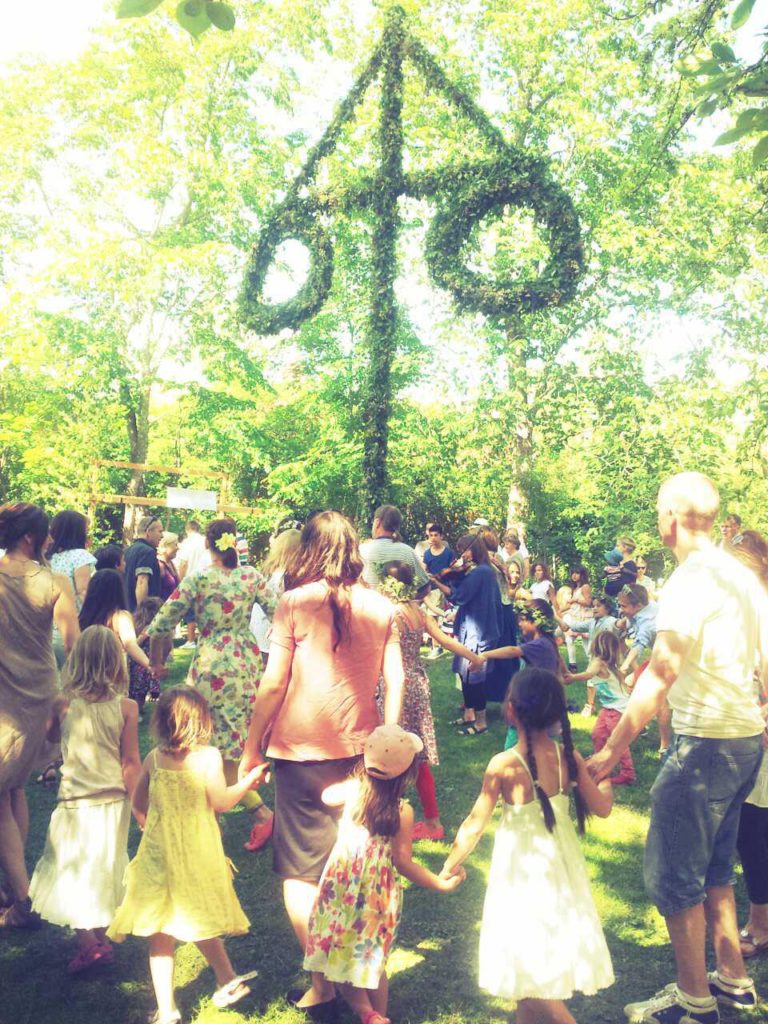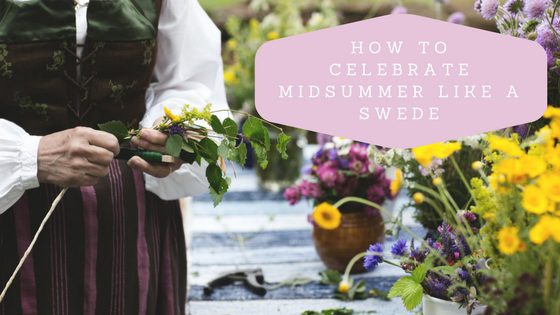Like Christmas, Easter and Valborg, Midsummer is one of the most significant days in the Swedish calendar. For many, it is the most loved holiday, and is celebrated enthusiastically all over the country by young and old alike. Like the other holidays I mentioned, Midsummer is recognised on the evening preceding Midsummer Day. Given Sweden’s long, cold and dark winters, it is no surprise that the beginning of summer is an occasion to be solemnised. There are countless traditions and festivities surrounding the day, and many of which are practiced as devotedly today as many years ago. Before I tell you how to experience a classic Swedish Midsummer, here is a little information about its origins.
Where did it all start?
Midsummer was initially celebrated in Northern Europe as a pagan festival that recognised the summer solstice, when the sun reaches its highest position in the sky as seen from the North Pole. Through Midsummer festivities, the end of winter was rejoiced and the longest day of the year was welcomed. Many cultures acknowledged the event with various types of feasts and rituals, often with themes of fertility to ensure a bountiful summer season and a successful harvest. The holiday always falls around 24 June, which is also the feast day of St. John the Baptist. Apparently, the early Catholic Church decided to take possession of pagan festivals by associating them with important Christian dates. This is why Midsummer is also known as St John’s Day, and often also incorporate themes of religion and specifically, Christianity.
In 1952 a decision was made by the Swedish Parliament that Midsummer should always fall on a Saturday, and Midsummer Eve on a Friday. This means that in Sweden the observance of Midsummer now transpires on the Friday between 19 and 26 June.

So, here are my tips for a traditional Swedish Midsummer:
- Head for the country
In the days leading up to Midsummer more and more people will head out into the countryside or the archipelago. Midsummer is definitely an outdoor occasion, so it is important that you leave the city centre in order to celebrate. Hopefully you will be invited to a party at somebody’s summerhouse. If not, there are plenty of areas (such as Gamla Uppsala or Skansen in Stockholm) that host large Midsummer events for the public.
- Make a flower crown
To look the part, you need to wear a flower crown on Midsummer. Early in the morning, people go outdoors and find wild flowers and leaves to adorn their hair. This is most common for women and children, but often for men too. Many Swedes will also wear traditional folk costumes on Midsummer, with the details of each outfit representing the specific region in Sweden that the wearer comes from.
- Raise a maypole
One of the most iconic Midsummer symbols is the tall wooden maypole, or midsommarstång, decorated with flowers and ribbons. Some claim it represents an axis that connects the world of the living to both the heavens and the underworld, originating from Norse mythology. However, given that Midsummer is a celebration of reproduction and fertility, many others see the maypole as a phallic symbol, and I have to agree.
- Dance around the maypole like a frog
Once the maypole is up, the music starts and it is time to dance and sing. There are many different Midsummer songs, but arguably the most popular is a song called Little Frogs, or Små grodorna. During this song, both adults and children hop around the maypole pretending to be frogs, singing the deep and poetic lyrics “Little frogs are funny to look at, they don’t have ears or tails”. When this song starts playing we encourage you not to ask why, but to join in and enjoy. We understand that there’s versions of this song in a lot of countries. So if you recognize it, feel free to post it below!
- Eat a Midsummer meal
Like all of the main Swedish holidays, a big part of the Midsummer tradition is to eat, drink and be merry. Once you have been in Sweden for a while you will start to realise that similar food is eaten on each major occasion, and this includes pickled herring, boiled new potatoes served with sour cream and chives, smoked salmon and gravadlax, hard boiled eggs and strawberries. On Midsummer, this is all washed down with a spirit called schnapps, and partygoers sing a drinking song before each new glass.
- Pick more flowers
Midsummer is thought to be a magical time for lovers. At the end of the evening, girls and young women are supposed to pick seven different types of flowers, and place them under their pillows. Legend has it that their future spouses will come to them in their dreams.
If you want to see more of Midsummer in Sweden, we encourage you to watch some of our current international students take over our Instagram account, TaggedforUppsala on Friday 23 June.
Happy Midsummer everyone!
/Jorja


I am staying in Uppsala for the first time 19 -26 th June. My great grand-parents came from there. Have recently traced their history through your very thorough & obliging Archives. I live in Durham, North East England. I would like to know about the festivities. I am staying centrally, plus 77 years old. Any information would be helpful. Thank you. Mrs Pat Bonner (nee Erickson). xx